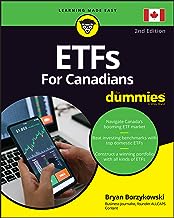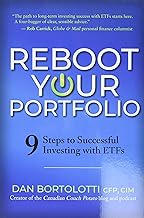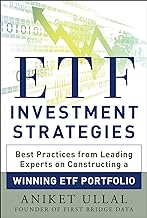Welcome to our blog where we delve into the world of investing and explore how to construct a smart ETF portfolio with a conservative approach, tailored for those who are venturing into investing for the long term. Investing can seem daunting, especially with the plethora of options available, but fear not, as we guide you through the process step by step.
Why Choose ETFs?
Exchange-Traded Funds (ETFs) have gained immense popularity over the years for good reason. They offer diversification, low expense ratios, and ease of trading, making them an ideal choice for beginners and seasoned investors alike. With ETFs, you can gain exposure to a wide range of assets such as stocks, bonds, and commodities without the need to pick individual securities. Many books and resources can be found here on Amazon.
The Conservative Approach
When embarking on a long-term investment journey, it’s crucial to adopt a conservative approach. This means prioritizing stability and minimizing risks, especially in the initial stages. Here’s how you can build a smart ETF portfolio with a conservative mindset:
1. Focus on Core Asset Classes: Begin by allocating a significant portion of your portfolio to core asset classes such as domestic and international stocks, bonds, and perhaps a small allocation to real estate. These are the foundation of your portfolio and provide stability over the long haul.
2. Diversification is Key: Spread your investments across different sectors, industries, and geographical regions to reduce the impact of market volatility. A well-diversified portfolio is less susceptible to the fluctuations of any single asset or market segment.
3. Prioritize Quality and Stability: Look for ETFs that track established, blue-chip companies with a history of stable earnings and dividends. Additionally, consider bond ETFs with high credit ratings and a track record of consistent returns. These investments may offer lower potential returns compared to riskier assets, but they provide a level of security that aligns with a conservative strategy.
4. Keep Expenses Low: Pay close attention to expense ratios when selecting ETFs. Since you’re in it for the long haul, even seemingly small differences in fees can significantly impact your returns over time. Opt for low-cost ETFs that provide excellent value for money.
5. Rebalance Regularly: Periodically review and rebalance your portfolio to maintain your desired asset allocation. Market fluctuations may cause certain assets to deviate from their intended weightings, so rebalancing ensures that your portfolio stays aligned with your risk tolerance and investment goals.
Sample Conservative ETF Portfolio
Here’s a sample allocation for a conservative ETF portfolio:
- 40% Total Stock Market ETF (Tracks broad U.S. stock market)
- 30% Total Bond Market ETF (Tracks investment-grade bonds)
- 15% International Stock Market ETF (Tracks developed international markets)
- 10% Dividend Aristocrats ETF (Invests in companies with a history of increasing dividends)
- 5% Real Estate Investment Trusts (REITs) ETF (Provides exposure to the real estate sector)
This allocation provides a balanced mix of growth potential and stability, suitable for long-term investors with a conservative mindset.
Final Thoughts
Investing for the long term requires patience, discipline, and a well-thought-out strategy. By adopting a conservative approach and constructing a smart ETF portfolio, you can navigate the ups and downs of the market while steadily working towards your financial goals. Remember to stay informed, stay diversified, and most importantly, stay focused on the long term. Happy investing!






